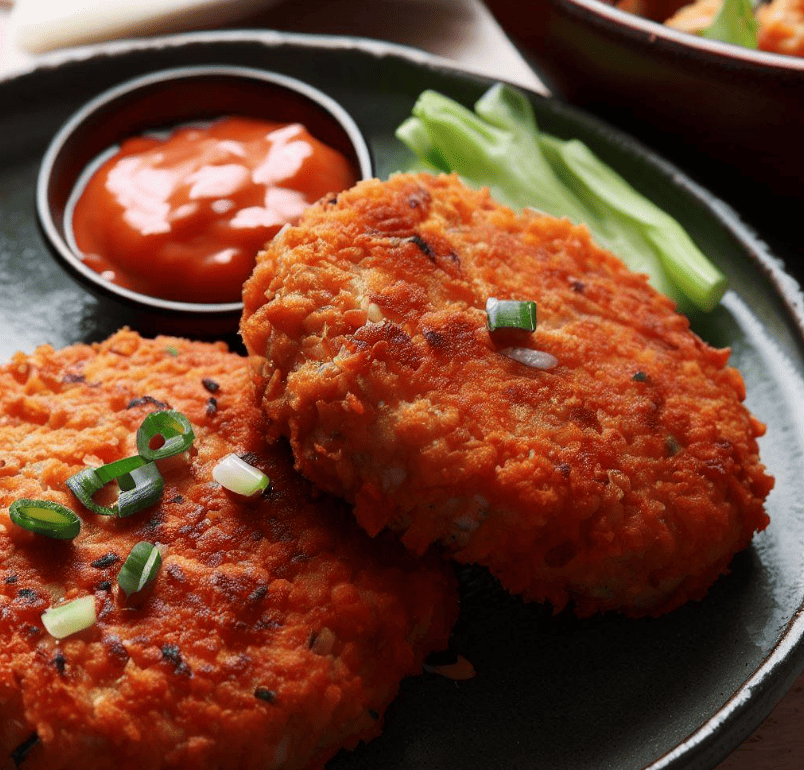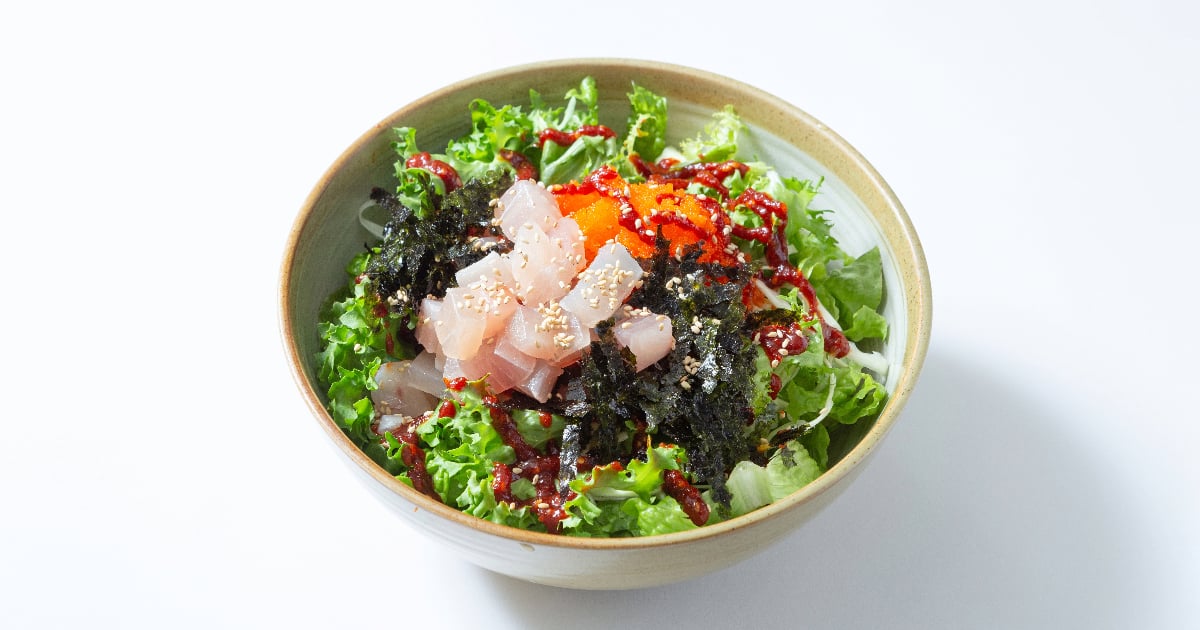Gochujang, the savory and slightly spicy Korean red chili paste, can transform your regular canned tuna into an explosively flavorful dish. This versatile ingredient adds a kick of spice and layers of umami flavor to tuna, creating a Korean-inspired tuna recipe that will satisfy any palate.

Gochujang's sweet, salty, and spicy taste makes it perfect for mixing into tuna salads, tuna patties, tuna rice bowls, and more. With just a few pantry ingredients like gochujang, mayonnaise, sesame oil, and soy sauce, you can totally reinvent your weeknight tuna meals.
Read on to learn all about gochujang tuna recipes, from preparation tips to serving suggestions and modifications. Turn your mundane tuna into a mouthwatering Korean-style dish with the marvelous flavor bomb that is gochujang!
What is Gochujang?
For those unfamiliar, gochujang is a thick, pungent Korean condiment made from fermented soybeans, glutinous rice, salt, and chili peppers. It delivers a complex medley of sweet, savory, and spicy flavors.
The chili peppers lend a modest heat, while the fermented soybeans provide a strong umami punch. The glutinous rice offers sweetness and a thick, paste-like texture. Together, these elements create a versatile condiment that works beautifully with tuna.
Gochujang is mildly spicy, rating around 4,000 Scoville heat units. For reference, a jalapeño pepper hits 2,500 to 8,000 SHU. So gochujang brings a noticeable but not overpowering heat.
The exact ingredients and spiciness can vary between brands. But in general, expect a pleasant fermented, chili flavor that isn't crazy hot.
Why Add Gochujang to Tuna?
On its own, canned tuna tastes relatively plain and one-note. By mixing in gochujang, you add sweetness, fermented savoriness, and a touch of heat.
Gochujang effectively balances and rounds out the fishy flavors in tuna. It also moistens up tuna salads, allowing the ingredients to mingle harmoniously.
When added to tuna patties, gochujang infuses each bite with a subtle chili kick. Drizzled over tuna rice bowls, it provides a lovely fermented chili sauce.
Along with seasoning, gochujang also acts as a binding agent that helps hold tuna mixtures together. Its thick, sticky texture keeps the ingredients from falling apart.
So if you find plain tuna to be boring, let gochujang work its magic. With minimal effort, you can give your tuna a major flavor makeover.
Gochujang Tuna Salad

Tuna salads make for excellent weekday lunches, portable snacks, or light dinners. To revamp your standard tuna salad, stir in gochujang and mayonnaise for a Korean spicy tuna salad bursting with flavor.
Ingredients:
- 1 (5 oz) can tuna, drained
- 1 to 2 Tbsp gochujang
- 3 Tbsp mayonnaise
- 1 Tbsp rice wine vinegar
- 1 tsp sesame oil
- 2 Tbsp chopped green onions
- Salt and pepper to taste
Instructions:
- In a small bowl, combine the mayonnaise and gochujang. Mix until smooth and uniform.
- Add the drained tuna, rice wine vinegar, sesame oil, green onions, and a pinch of salt and pepper to a medium bowl.
- Pour the gochujang mayo over the tuna. Gently fold together until evenly combined.
- Taste and adjust seasonings as desired. Serve over greens, stuffed in a pita or sandwich, with crackers, or on cucumber slices.
The mayo provides creaminess while the gochujang contributes sweet heat, umami, and subtle chili flavor. Rice wine vinegar adds zingy brightness to cut through the richness. Sprinkle in some sesame seeds or chopped kimchi for extra texture and flavor.
Gochujang Tuna Patties
Take your tuna patties from bland to brilliant with the addition of gochujang. Mixed into the patties and used as a dipping sauce, gochujang gives these crispy tuna cakes an addictive balance of flavors.
Ingredients:
- 1 (5 oz) can tuna, drained
- 1 large egg
- 3 Tbsp panko breadcrumbs, plus more for coating
- 1 Tbsp gochujang
- 1 Tbsp mayonnaise
- 1 green onion, minced
- Vegetable oil, for frying
- Salt and pepper to taste
Gochujang Mayo Dipping Sauce:
- 3 Tbsp mayonnaise
- 1 Tbsp gochujang
- 1 tsp rice wine vinegar
Instructions:
- In a small bowl, combine 1 Tbsp gochujang and 1 Tbsp mayonnaise.
- In a medium bowl, mix together the tuna, egg, panko, gochujang mayo mixture, green onion, and salt and pepper.
- Use your hands to form patties, then coat all sides with additional panko.
- In a skillet over medium heat, add vegetable oil. Fry patties 2-3 minutes per side until golden.
- Make the dipping sauce by mixing mayo, gochujang, and vinegar.
- Serve patties warm with the gochujang mayo dipping sauce.
These crisp, golden tuna patties pair perfectly with the creamy, mildly spicy dipping sauce. The gochujang adds moisture and binding to the patties, while also providing tremendous flavor. For extra spice, use a double-spicy gochujang.
Gochujang Tuna Rice Bowl
For a quick weeknight meal, assemble a hearty Korean-style tuna rice bowl. Gochujang becomes both a sauce and seasoning here, infusing tons of flavor into basic tuna and rice.
Ingredients:
- 1 (5 oz) can tuna, drained
- 2 cups cooked white rice
- 1 Tbsp gochujang
- 1 Tbsp soy sauce
- 1 tsp sesame oil
- 1 tsp rice wine vinegar
- 1 green onion, chopped
Optional Toppings:
- Fried egg
- Kimchi
- Sesame seeds
- Seaweed snacks
Instructions:
- In a small bowl, combine the gochujang, soy sauce, sesame oil, and rice wine vinegar.
- Add the tuna and sauce mixture to a bowl of hot cooked rice. Top with green onions.
- Add any optional toppings like a fried egg, kimchi, sesame seeds, or crumbled seaweed snack. Enjoy!
The sauce adds plenty of bold Korean flavor to plain rice and tuna. Feel free to adjust the amount of gochujang based on your spice preferences. For extra richness, top with a fried egg.
Gochujang Baked Tuna Cakes
These baked tuna cakes transport all the flavors of traditional Korean pancakes into easy, bite-sized patties. Gochujang gives them a mild chili kick while kimchi provides a probiotic tang.
Ingredients:
- 1 (5 oz) can tuna, drained
- 1⁄4 cup kimchi, chopped
- 1 large egg
- 1⁄4 cup panko breadcrumbs
- 2 green onions, minced
- 1 Tbsp gochujang
- 1 Tbsp mayonnaise
- Vegetable oil cooking spray
Instructions:
- Preheat oven to 400°F. Line a baking sheet with parchment.
- In a medium bowl, combine tuna, kimchi, egg, panko, green onions, gochujang, and mayonnaise.
- Form the mixture into small patties and place them on the baking sheet. Spray tops with oil.
- Bake for 10-12 minutes until tops are lightly browned. Flip and bake for 5 more minutes.
- Serve warm with soy sauce for dipping.
The gochujang adds subtle heat while the kimchi provides a nice sour contrast. Baking these tuna cakes yields a crispy exterior with a moist, flaky interior. Make them ahead for quick weekday lunches or snacks.
FAQ
Can I use regular chili paste instead of gochujang?
You can try substituting regular chili paste or sriracha, but the flavor won't be quite the same. Gochujang has a distinct sweetness and fermented taste that chili paste lacks. For authentic Korean flavor, use real gochujang.
What's the best way to serve gochujang tuna?
Gochujang tuna recipes taste fantastic served over rice, stuffed in sandwiches or lettuce wraps, mixed into pasta salads, or eaten as patties. Pair them with classic Korean banchan like kimchi, radish pickles, and seaweed.
Is canned or pouch tuna better for gochujang recipes?
Either canned tuna or tuna pouches will work wonderfully in these recipes. Go with whatever you have on hand. Just make sure to drain the tuna well before using.
Can I make gochujang tuna patties without breadcrumbs?
While you can try omitting breadcrumbs, they really help bind the patties together. For best results, use panko breadcrumbs or something similar. Without them, the patties may fall apart easily.
What proteins can I substitute in place of tuna?
Salmon, chicken breast, or extra firm tofu diced small can all replace tuna in these recipes. You may need to adjust seasonings slightly with different proteins.
Conclusion
Gochujang's savory umami flavor and subtle heat make it the perfect match for tuna. With minimal ingredients likely already in your pantry, you can whip up tasty Korean-inspired tuna salads, patties, rice bowls, and more.
Spice up boring canned tuna with the amazing versatility of gochujang. This Korean red chili paste effortlessly takes tuna from bland to bold.
So break out that gochujang and get ready to enjoy tasty new depths of flavor in your tuna recipes!

